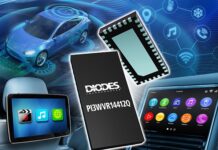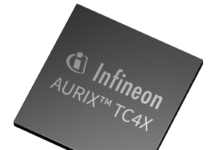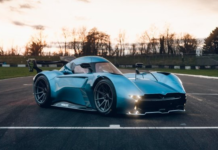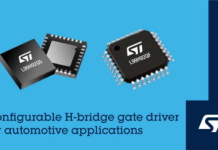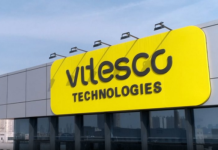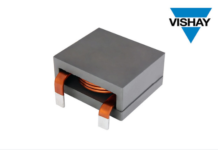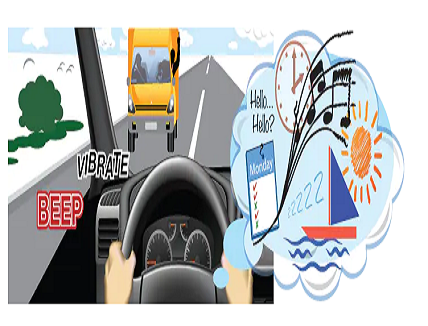
The article explore the various areas under the term automotive infotainment and how electronically assisted safety features are integrated into the vehicle.
It’s often said that automotive infotainment “systems” began with the 1930 introduction of the first true car radio, “the Motorola,” by Paul and Joseph Galvin, and William Lear. And who could want more? The radio provided entertainment and information about what was going on in the world. That level of satisfaction lasted for quite a while.
It took about another 32 years just to add FM capability, and still more years to offer removable media for music. First, there were the analog music sources—4-track Muntz Stereo-Pak (1962), then more popular 8-tracks (1964)—quickly followed by compact cassettes from Philips. But soon, access to music followed the growing personal computer model, with CDs and digital media players, and digital radio after that. And that was before infotainment grew out of just being a rolling boom box. Now, the rate of change is so rapid that it’s difficult to guess what’s just ahead.
Thanks to movies and the power of advertising, the driving public was exposed to what they were missing. And it worked. They could feel the excitement and they wanted more!
The year is 1964 and movie goers are mesmerized watching super spy James Bond at the wheel of a tricked out Aston Martin DB5. After placing a homing device in villain Auric Goldfinger’s Rolls-Royce Phantom II, Bond flips open a panel to reveal a radar and geo-tracking screen. We watched as a blinking target traversed electronically displayed roads. And, without knowledge of future GPS systems, we said, “that’s impossible…but wouldn’t it be cool!” Starting with that DB5, Bond has always had the ultimate in infotainment systems, although some of the features did stretch the definition of what we would consider infotainment (like that passenger ejector seat!). Cell phones weren’t available yet either, but a “radio telephone” kept him in close touch with HQ. (Unfortunately, one piece of technology missing from that DB5 was a LoJack tracker, as the primary movie car was stolen in 1997 from a hanger in the Boca Raton, Florida airport and hasn’t been seen since. It is said to be worth several million dollars.)
With the exception of the lethal toys built into Bond’s car, today’s car buyers can easily out-Bond Bond, with a dizzying array of options. And “dizzying” is an apt word, as many drivers without training from Q are often confused by how to engage the features.
A Broad Definition
The capabilities that are now included in infotainment encompass much more than entertainment products, enhancing convenience, safety, and how humans interact or interface with our vehicles. Broadly, infotainment includes, but is not limited to, the following functions:
- Entertainment and information – radio, audio/video — broadcast and via storage media, satellite reception technology, Radio Data System (RDS)
- Active noise reduction systems for a quieter cabin
- GPS – navigation, telematics, security
- In-Vehicle Connectivity – with wireless devices in the vehicle (i.e. Bluetooth® for audio and cell phones, and near-field for fobs)
- Internet Connectivity – mobile hot spots, factory firmware, and software system updates
- Safety – driver assistance systems including video visual support, lane control, and accident avoidance
- Security Systems
- Visual Sensors – back-up cameras, back-up warning alerts, and dash cams
When we think of infotainment, most of us gravitate toward the core of information such as RDS or GPS, and entertainment such as music, video, and Internet connectivity. While the march to expanding functionality of infotainment systems may be accelerating, it can be quickly brought to a halt by complex or confusing interface devices and software. Some first-generation input devices were so burdensome that they caused drivers to ignore the added capabilities that they should have been enjoying. Even voice command systems have had growing pains. Because distracted driving can result in accidents, interfaces need to be very intuitive or even intelligent enough to make some decisions without user action, based on observed behaviors or conditions. It is this area of development that may offer the greatest challenges.
Consumers Report recently chimed in on the ease-of-use of infotainment systems, with results of a survey involving 58,000 vehicles from the 2013 to 2016 model years. They found that systems overall were gaining much more favor with users. Some surprises surfaced as well. What could the high-end Audi A6, the Chevrolet Impala, and the Kia Optima all have in common? According to CR’s survey, the trio had easy-to-use, top performing infotainment systems. They commented that automakers approach the infotainment design mission as creating a system that “will do everything a smartphone will do—in a much less distracting way.”
The lines are blurring between what might be considered part of infotainment and what electronically assisted safety features are integrated into the vehicle. For the purposes of this article, if the driver is involved in interacting with the control of a system providing information or entertainment, we’ll consider it infotainment. For example, a radar assist that automatically stops your vehicle to prevent a rear-end collision is outside of our discussion.

Figure 2: The National Safety Council and the University of Iowa co-wrote a website that very simple terms the incredible range of automotive safety systems available now, as well as what’s around the corner. (Source: www.MyCarDoesWhat.org)
Until recently, most of the devices that provide infotainment have been discrete, i.e. components independent of each other. As automakers have gained a better understanding of what features and functions their customers crave, they have turned to technology companies to take a systems approach to these capabilities. The change to a systems-oriented architecture has provided many benefits, including lower cost, better interactivity between functions, more consistent operating interfaces, better performance and reliability, less power consumption, and the ability to remotely update systems without costly service visits.
What all of these systems have in common is the need for:
- Components that “power” the systems
- Processors, memory, and bus systems
- Radio modules (now trending toward SDRs, or software defined radios)
- Sensors (including position sensors, accelerometers),
- Power components (DC-DC converters, supercapacitors, thermistors)
- Transducers (piezoelectric sounders and diaphragms),
- Near field and signal processing devices (ceramic resonators and filters, crystal units, antennas, Bluetooth and Wi-Fi modules.)
Infotainment System Architectures
Figure 3 below indicates the structure of how infotainment systems have evolved in recent years, with separate analog and digital RF blocks acting as signal sources, which are ultimately connect to a multimedia processor to feed audio and visual displays and speakers. While functional and robust, this approach is costly to design and manufacture, and has significant physical space requirements. The complexity of the structure also makes it difficult to handle geographic variables and future updates. Power requirements can be significant.

Figure 3: Current infotainment approach using dedicated hardware connected with a dedicated interface technology. (Source: Maxim Integrated).
In order to overcome the limitations of the approach discussed, Maxim Integrated has developed a new system architecture. As shown in Figure 4, a new generation of receiver module, based on the company’s RF to Bits© architecture and tuner (software defined radio). Unlike the example shown in Figure 1, system-specific tasks are realized in software, lessening the RF design burden. Using standardized interfaces, such as I²S or LVDS, offers greater flexibility to configure and scale the system to varying and future requirements. Now a single front end or universal tuner can replace multiple specialized tuners. The processor handles any type of demodulation and decoding that may be required.
Overall, the RF to Bits architecture reduces the number of system components required. This approach results in, space and power savings, less heat and improved reliability.

Figure 4: Maxim’s RF to Bits architecture uses one piece of hardware to support different standards.
Powering and Feeding the System
In addition to the chip sets available for infotainment technology, a broad range of supporting components are necessary to power the systems, to provide operational data, display and annunciate information and to keep the wrong signals from talking to vital systems. And as any engineer who has designed systems for automotive applications knows, the environment is a demanding one. Automakers generally require AEC-Q200 -compliant products or TS16949 certification. Some component manufacturers, such as Murata, have product lines of familiar passive components and modules that are designed and manufactured specifically to provide reliable operation under the stress of automotive operating conditions. Figure 5 illustrates how Murata categorizes their products targeting automotive information, comfort and accessory operations.

Figure 5: Categories of components and modules for Murata infotainment applications.
It’s useful to breakdown the Murata list and see what kinds of components are included.
1) Navigation/Infotainment
- Rotary Position Sensors – audio system function control
- Accelerometers – these components have become the utility infielders of automotive electronics, providing positional and G force data for many different systems.
- DC-DC Converters, Supercapacitors, Thermistors – power systems
- Ceramic Resonators, Filters and Discriminators, Crystal Units – RF circuitry
- Bluetooth® and Wi-Fi Modules
2) Remote Keyless Entry
- Supercapacitors
- Ceramic Resonators, Filters and Discriminators, Crystal Units
- Piezoelectric Diaphragms – for audio feedback
3) Meter/Heads Up Display
- Rotary Position Sensors
- DC-DC Converters, Thermistors
- Ceramic Resonators, Crystal Units
- Piezoelectric Sounders
4) Power Seat/Power Mirror
- Thermistors
- Ceramic Resonators, Crystal Units
- Piezoelectric Sounders
5) Parking Assist
- Ultrasonic Sensors – Position sensing
- Accelerometers
- Supercapacitors, Thermistors
- Ceramic Resonators, Crystal Units
- Piezo Electric Sounders
6) General Purpose
- Monolithic ceramic capacitors
- Chip inductors
- Common mode coils
- Ferrite beads
- EMI Suppression Filters
One of the more interesting new developments from Murata is Heartbeat Detection. We’ve all heard horrible news stories about the dangers of leaving a child in an unattended car. This concept combats that problem with very sensitive sensors and sophisticated software. If a human being is in the car when the car is locked and should be empty, an alert is sounded. And while the main function is to detect if a child, for example, was inadvertently left in the car, it could also be useful to detect hidden car occupants.
Summary
After a somewhat rocky start, modern infotainment systems are rapidly becoming a part of the automotive mainstream. From a driver and passenger perspective, they are easier to use than earlier products, more feature rich, and much more reliable.
From the point of view of the engineer, there are now readily available architectures with corresponding chipsets and supporting components to reduce the pain and length of the design cycle. These architectures make it much easier to be creative with feature sets and even totally new ideas.
The blog has been re-published with permission.



